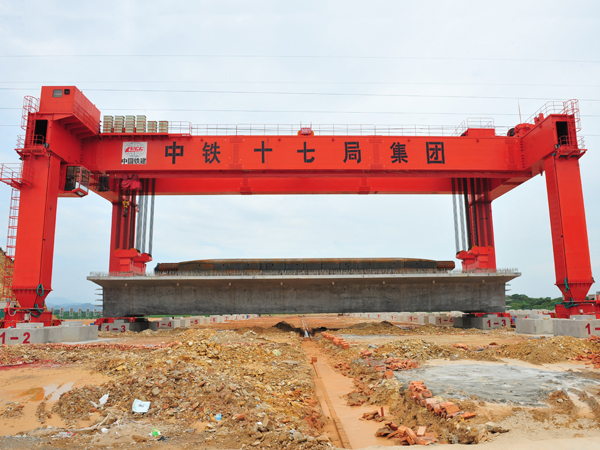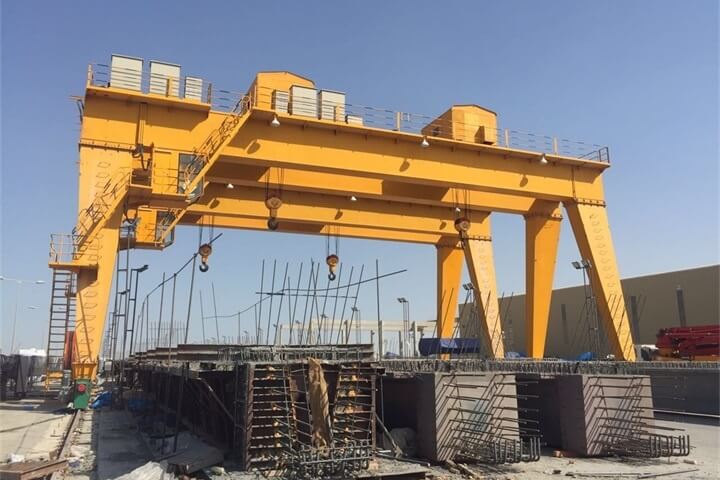Apr. 10th, 2025
1. Preparation Before Installation (about 3-7 working days)
Site assessment and rectification
Before installing the bridge and gantry crane, the work site must be fully inspected. First, it is necessary to confirm whether the ground load-bearing capacity meets the standard. It is usually required that each square meter of the ground can withstand a pressure equivalent to the weight of an adult Asian elephant. When using professional measuring instruments to scan the flatness of the ground, focus on checking the drop between the four corners and the center point. Ideally, the height difference between any two points should not exceed the thickness of an ordinary smartphone.
For bridge and gantry cranes installed in the open air, special attention should be paid to the surrounding environment. Check whether there are high-voltage wires passing over the work area, and confirm that there is enough space between the surrounding buildings and the end of the track. This space should usually be able to accommodate a medium-sized truck parked horizontally. At the same time, the impact of the monsoon wind direction on the stability of the equipment should be evaluated, and windproof anchoring devices should be installed if necessary.
Equipment unpacking acceptance
When the bridge and gantry crane is transported to the site, the components should be counted item by item according to the packing list. Focus on checking whether the main beam has bending deformation caused by transportation. A ruler can be attached to the surface of the beam for visual inspection. The electrical control cabinet needs to confirm that the sealing strip is intact and the internal wiring terminals are neatly arranged without looseness. The random file package must include the equipment factory qualification certificate, load test record and multilingual operation manual.
Tools and personnel preparation
Three types of special tools are required to install
bridge and gantry cranes: first, lifting equipment. It is recommended to use lifting machinery with automatic balancing function; second, high-precision measuring instruments, including electronic levels that can detect subtle angle changes; and finally, fastening tools that meet industrial standards, especially hydraulic torque wrenches for connecting the main beam and the end beam. The operation team must include at least one mechanical engineer, one electrical engineer and one lifting commander, and all personnel must hold a valid special operation certificate.
2. Phased Installation Implementation Process
Track laying phase
The track is the basis for the operation of bridge and gantry cranes. When installing, the debris on the surface of the foundation must be cleaned first. Use a calibrated positioning device to determine the center line of the track. The parallelism error between adjacent tracks must be controlled within a very small range. This accuracy requirement is equivalent to the maximum deviation of the left and right tracks on a 100-meter runway not exceeding the width of an adult's palm.
When fixing the track, a double nut structure that prevents loosening should be used, and the tightening force of each pressure plate bolt should be uniform. Appropriate expansion gaps should be reserved at the track joints. The size of this gap needs to take into account the local temperature difference throughout the year, and is usually measured under the two extreme conditions of cold shrinkage and thermal expansion.
Main structure assembly
When hoisting the main beam of the bridge and gantry crane, a certified special hoist must be used. During the hoisting process, the lifting speed should be kept constant and slow to avoid violent swings. When the main beam is docked with the end beam, the connecting bolts should be tightened step by step in three times according to the diagonal sequence, and the tightening force should be controlled at 30%, 80% and 100% of the specified value each time.
Pay special attention to line protection when installing the electrical system, and all exposed cables need to be equipped with metal sleeves. The wiring of the control system must be docked strictly according to the color coding, and after the connection is completed, an insulation tester should be used to detect the insulation performance of each wire.
3. Safety Management of the Installation Process
Environmental monitoring requirements
A real-time wind speed monitoring device must be set up at the
bridge and gantry crane installation site. When the wind force reaches a level that makes it difficult for an adult male to stand steadily, high-altitude work should be suspended immediately. Special attention should be paid to moisture protection of electrical equipment during rainy day construction, and all open-air junction boxes need to be equipped with waterproof covers.
Personnel protection measures
Every staff member involved in the installation of bridge and gantry cranes must be equipped with a full set of protective equipment. Safety helmets should be industrial-grade products with cushioning linings, and the length of the safety rope should be calculated according to the working height to ensure sufficient cushioning distance in the event of an accidental fall. The tool kit should use an anti-drop design, and all small parts must be placed in a container with a lock.
Load test procedure
After the installation is completed, the bridge and gantry crane should be graded and tested. First, run it without load, let the equipment reciprocate throughout the entire range, and observe whether each component operates smoothly. Then perform a static load test, using standard weights to gradually increase the weight, and keep it in a hovering state for at least ten minutes after each weight increase. Finally, perform a dynamic test to simulate the compound actions in actual work, paying special attention to the reaction speed of the emergency braking system.
4. Daily Maintenance and Maintenance Points
Daily inspection items
Bridge and gantry crane operators need to complete basic inspections before starting work every day. This includes visually checking the wear of the wire rope, manually testing the sensitivity of each limit switch, and listening for abnormal sounds when the equipment is started. The track area should be cleaned regularly to prevent the accumulation of metal debris from affecting the smoothness of operation.
Monthly maintenance content
The key parts of the bridge and
gantry crane should be deeply maintained every month. The lubrication operation should use the grease specified by the manufacturer, and pay special attention to the oil film coverage of the gear meshing parts. The inside of the electrical cabinet needs to be dusted and cleaned, and the tightness of the terminal blocks should be checked. The tightening torque of the structural connection points should be re-measured, and the loose bolts should be replaced.
Annual comprehensive inspection
Every year, a professional organization needs to conduct a comprehensive evaluation of the bridge and gantry crane. Use an ultrasonic flaw detector to detect whether there are hidden cracks inside the main beam, and use a laser measuring instrument to verify the straightness error of the track. The safety protection device should be simulated and tested to ensure that the emergency stop system can respond within the specified time.
5. Special Scenario Solutions
Renovation of old factory buildings
When installing bridge and gantry cranes in the renovation project, it is necessary to first evaluate the load-bearing capacity of the building structure. Non-destructive testing technology can be used to scan the condition of beams and columns, and auxiliary support frames can be installed under the track if necessary. When selecting equipment, give priority to models with low operating noise to avoid vibration effects on the original building.
Multi-device collaborative operation
When multiple bridge and gantry cranes are operating in the same area, a unified dispatching management system must be established. Install anti-collision sensors and set safe intervals between equipment. The operating speeds of different equipment should be set with gradient differences to avoid synchronous resonance.
6. Common Problem Handling Guide
Operation offset problem
If the
bridge and gantry crane has travel offset, first check the flatness of the track joint. Use a level to measure the relative height of each section of the track to confirm that there is no local settlement. Then detect the installation angle of the wheel group to ensure that the axes of all wheels remain parallel. Finally, test the output power of the drive motor and adjust the parameter settings of the inverter.
Abnormal noise handling
When the bridge and gantry crane makes abnormal sounds during operation, it should be stopped and checked immediately. Common causes include oil-deficient, worn bearings, loose connection parts, or gearboxes with foreign objects. When handling, lock the energy first, do a good job of fall protection, and then troubleshoot.
From the above detailed description, it can be seen that the installation of bridge and gantry cranes needs to take into account both technical accuracy and safety management. Every link from preliminary preparation to later maintenance cannot be ignored. Only by establishing a standardized operating process can the long-term and stable operation of the equipment be ensured. It is recommended that enterprises keep complete construction records during the installation process, which is of great value for subsequent maintenance and accident tracing.
Huada provides a professional team to coordinate the safe installation of bridge and gantry cranes and all related services to ensure that your equipment can operate efficiently. Please feel free to contact Huada!


